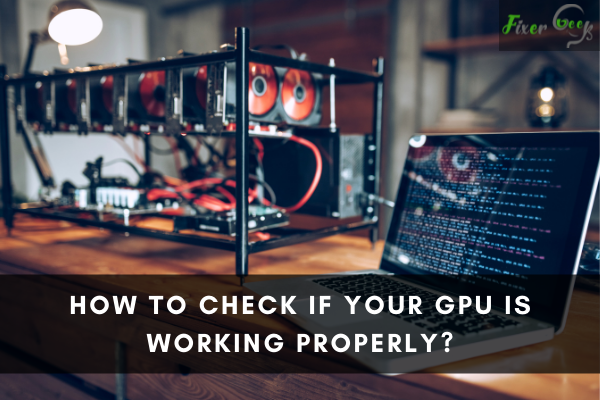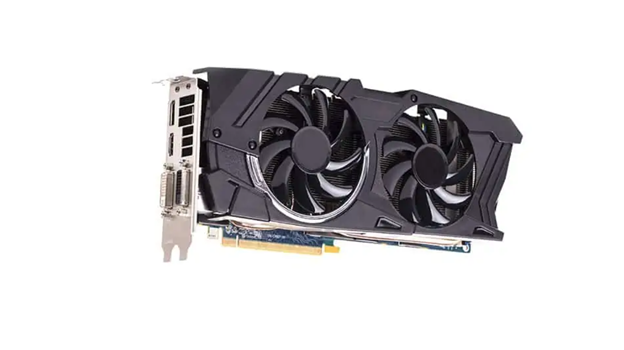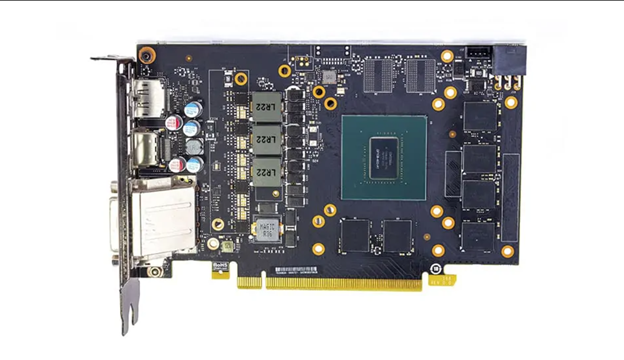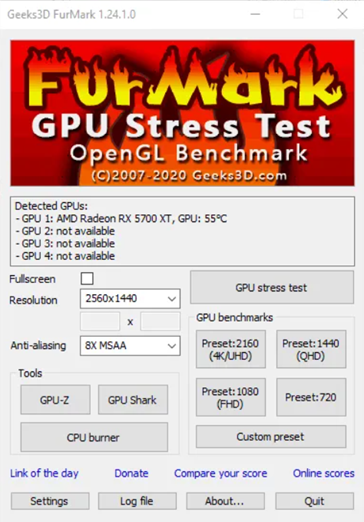fIf you are familiar with the cryptocurrency world, then you must be aware of the term GPU (or Graphics Processing Unit). This is a part of your computer which is responsible for processing the graphics. It performs thousands of calculations per second and determines how fast or slow a computer can process frames. I’m not going to dwell much on what GPU is and how it works, but I will tell you about few ways by which you can check if your GPU is working properly.

When it comes to computers, graphics cards are significant. Understanding how to test if your GPU is functioning properly will help your system run more smoothly, particularly when gaming. We can run a few various tests to see if your GPU is capable of handling the workload. In addition, there are specific simple hardware examinations and quality checks that you can perform to help your graphics card work more reliably.
I’ll give you a comprehensive guide to check your GPU condition and help you figure out the issues.
Checking If Your GPU is Working Properly
Before continuing, I strongly advise you to disable any overclocking in your device’s BIOS and any overclocking tools you may be using. If you don’t have your GPU driver updated, install the most recent drivers or patch the ones you already have before proceeding. Now, go along with the following to check if your GPU is working or not
Checking the Cooling Fans
Before you begin, ensure your device is powered off and that no electricity is hooked to it. To examine the graphics card, detach it. Ensure that the fan(s) run relatively freely. It’s a negative indicator if it stops quickly after you provide a light flip with your finger.

When placing a tiny amount of stress on the tip of the blades, you wouldn’t want the fan to wobble. If it does, it signifies the fan’s components are worn out. Unless the fan isn’t functioning right, your GPU will be unreliable and unable to perform at its best.
Replacing the Thermal Paste
Replacing the thermal paste on your GPU is a good option if you don’t know the exact age of your GPU. It will ensure that the GPU is performing at its best to attend all the performance checks throughout the process.

You should consult with a professional when replacing the thermal paste on your GPU. It’s a critical process and can be fatal if accidents occur.
Performing a Stress Test
Stress testing puts your GPU in a position where you can check its ability and watch the graphical output on display. If you fear your GPU is malfunctioning, use FurMark to test it and get answers immediately. FurMark is a good stress testing software for your GPU, and it tests the stability of your GPU by pushing it to its maximum. Download FurMark from its official website and install it on your PC. Now, proceed to the following to perform the stress test
- Launch the software. When you want to run a typical GPU stress test, you can leave most of the settings in the main menu alone.

- One option you might want to alter in the Settings is to select the checkbox for “GPU temperature alarm.” Whenever your GPU reaches a specific temp, it will issue a warning. Go to “Settings” and set your preferred temperature.
- Click on “GPU stress test,” then select “Go” to start the stress test.
You should notice that the speed of the cooling fan of the GPU is increasing, and if the test is successful, it means your GPU is working correctly. FurMark failing or forcing your PC to break down is the earliest and most clear symptom of hardware problems.
Playing Games to Check
Play your preferred game for few hours. If the GPU is not working correctly, your device might freeze or restart very often while playing.
Summary: Check If Your GPU is Working Properly
- The easiest way to check if your GPU is working properly and display content on Windows 10 is to launch the Microsoft DirectX Diagnostic Tool.
- To open it, simply press the Windows key + R on your keyboard, type “dxdiag” and press Enter.
- In the window that opens, make sure the Display tab is selected at the top.
- Information about your graphics card should be located here.
- Make sure everything looks right and displays your card’s information as normal.